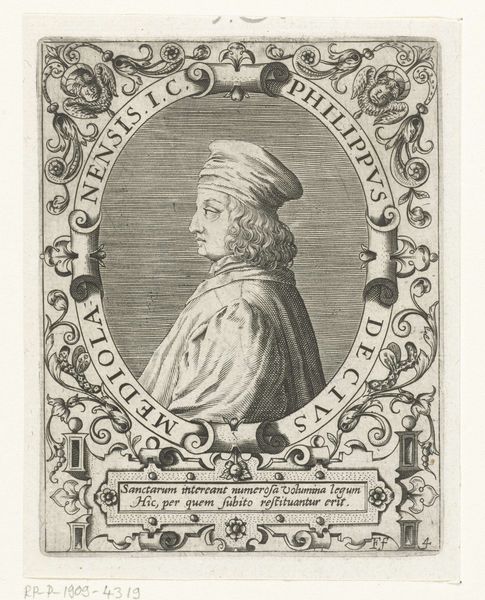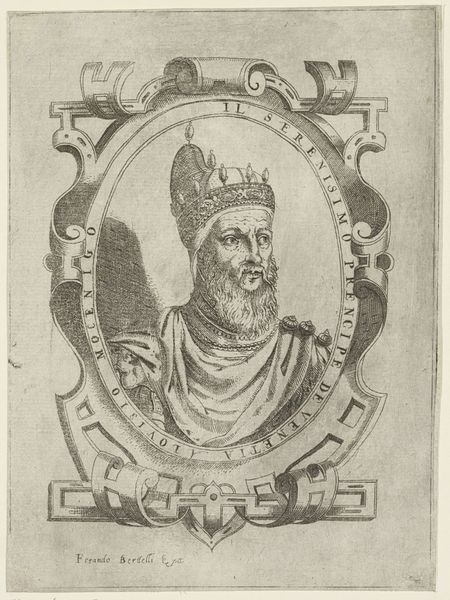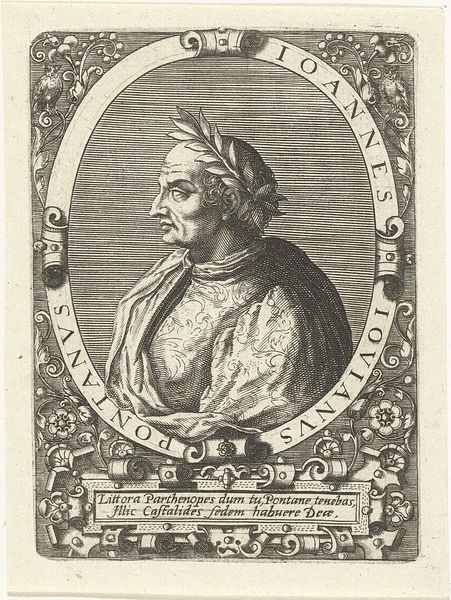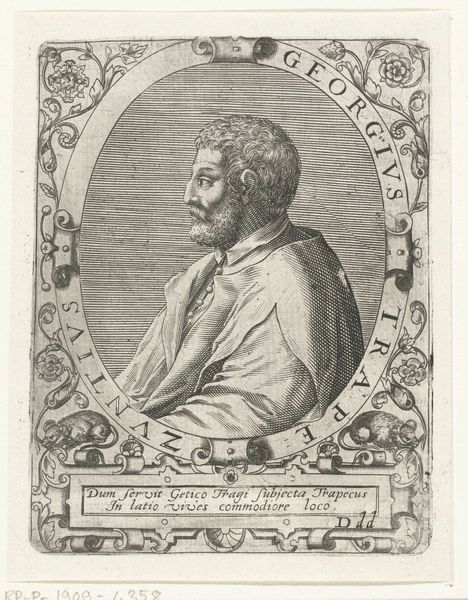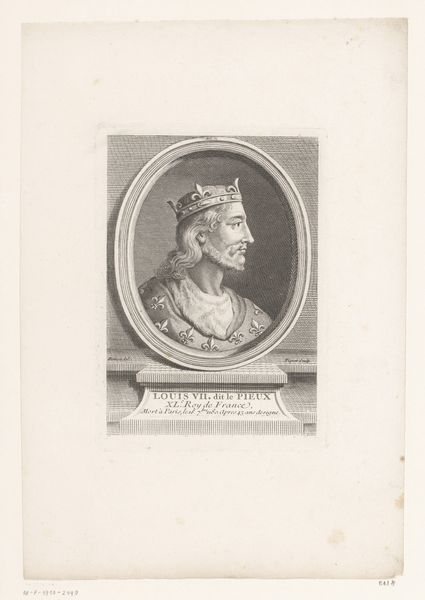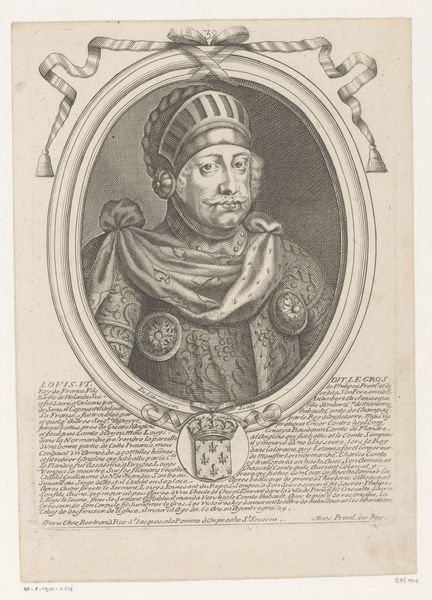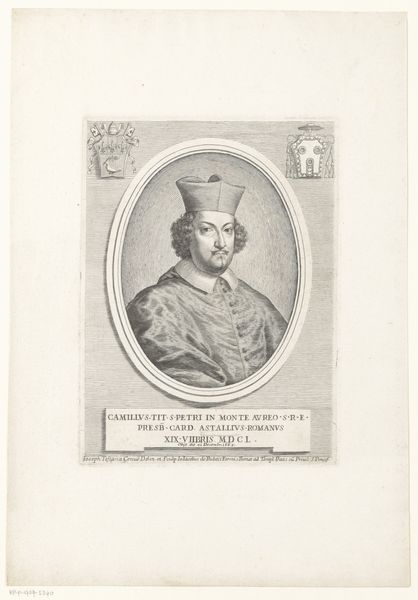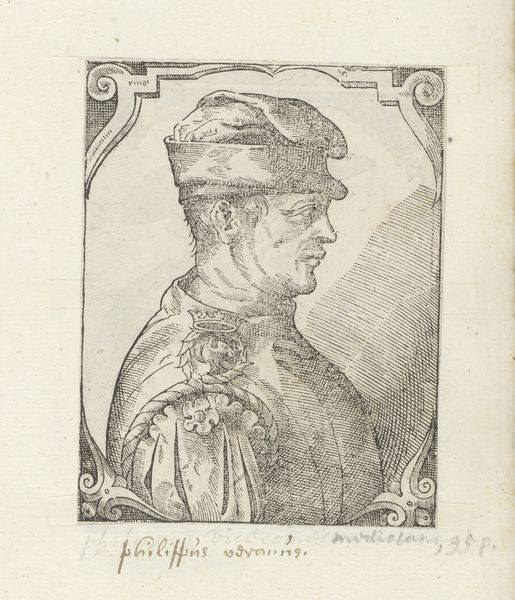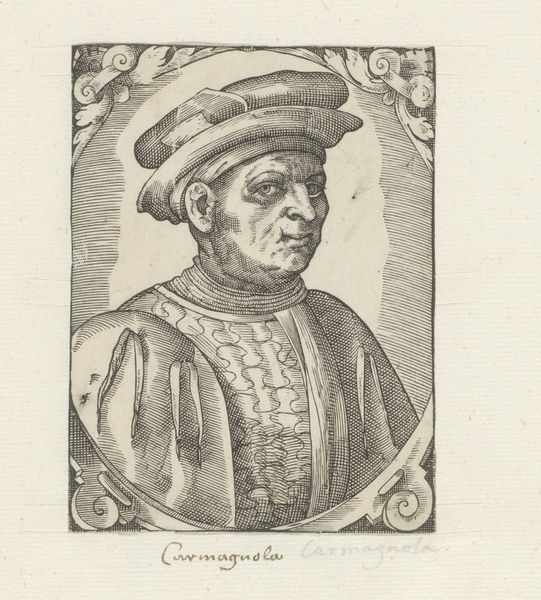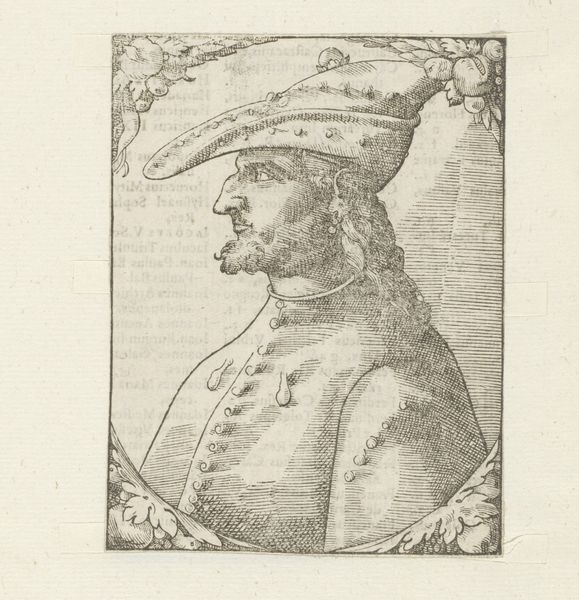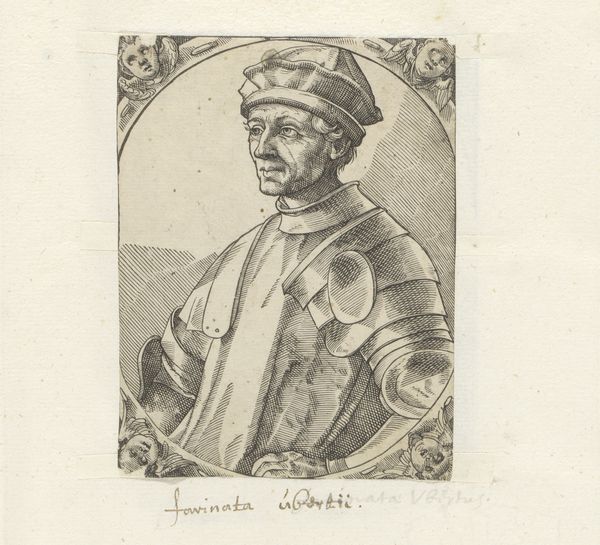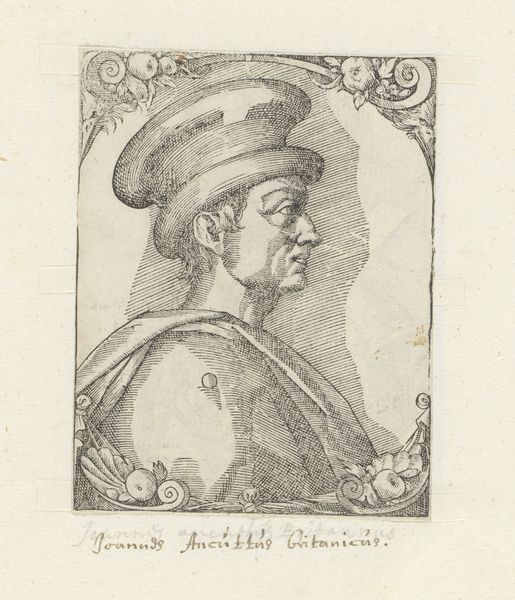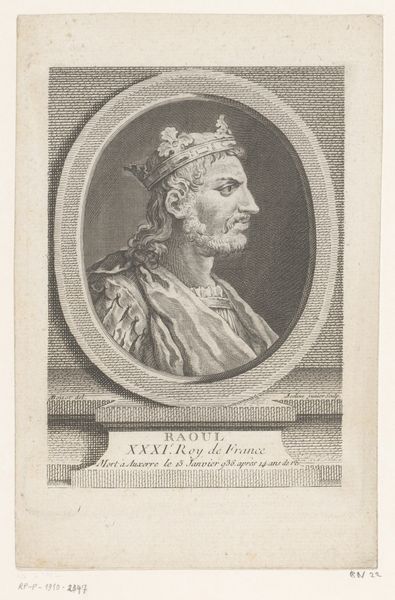
print, engraving
#
portrait
# print
#
pencil sketch
#
old engraving style
#
figuration
#
11_renaissance
#
line
#
italian-renaissance
#
engraving
Dimensions: height 111 mm, width 85 mm
Copyright: Rijks Museum: Open Domain
Curator: This engraving, likely produced between 1549 and 1575, presents a profile portrait of Braccio da Montone, rendered in meticulous detail. Editor: My immediate impression is one of contained power. The sharp lines and the stern profile convey a sense of authority and unyielding will. It feels classically austere, yet the engraver has teased out remarkable textures. Curator: Absolutely. The engraving technique, specifically the cross-hatching, creates a complex interplay of light and shadow that defines the subject's features and garments, but note, too, the graphic frame which itself seems symbolic of Renaissance ornamentation with its scrolling forms and stylized urns. Editor: The hat, especially, stands out. Its multiple layers suggest status and importance, visually emphasizing Braccio da Montone’s position in society. Layers upon layers of assumed rank. It projects an intentional aura. Curator: The formal construction is interesting, too. Observe how the artist uses line to create volume and depth. The use of hatching and the starkness in some sections contributes to a powerful, albeit limited, tonal range. And the linearity here provides clear structure that complements the sitter’s imposing stance. Editor: Looking closer, those stylized urns might represent virtue or some form of civic contribution. In Renaissance portraiture, the sitter is often surrounded by iconographic cues meant to reveal more than just physical likeness. The severity is balanced just a bit by what looks like subtle cues toward a narrative. Curator: Yes, the symbols definitely enrich the artwork beyond simple portraiture. One has to imagine the intellectual and visual frameworks within which the image was originally designed. A detailed study of visual rhetoric and that Renaissance semiotic field is clearly important in decoding what is depicted. Editor: It does seem we've only scratched the surface today. Thanks to a masterful engagement of form, line and symbol, the engraving not only preserves an image of the past but invites inquiry into enduring historical concepts of leadership. Curator: Indeed. A study of engravings provides the foundation for interpreting similar works—the structure illuminates greater themes and compositional trends.
Comments
No comments
Be the first to comment and join the conversation on the ultimate creative platform.
